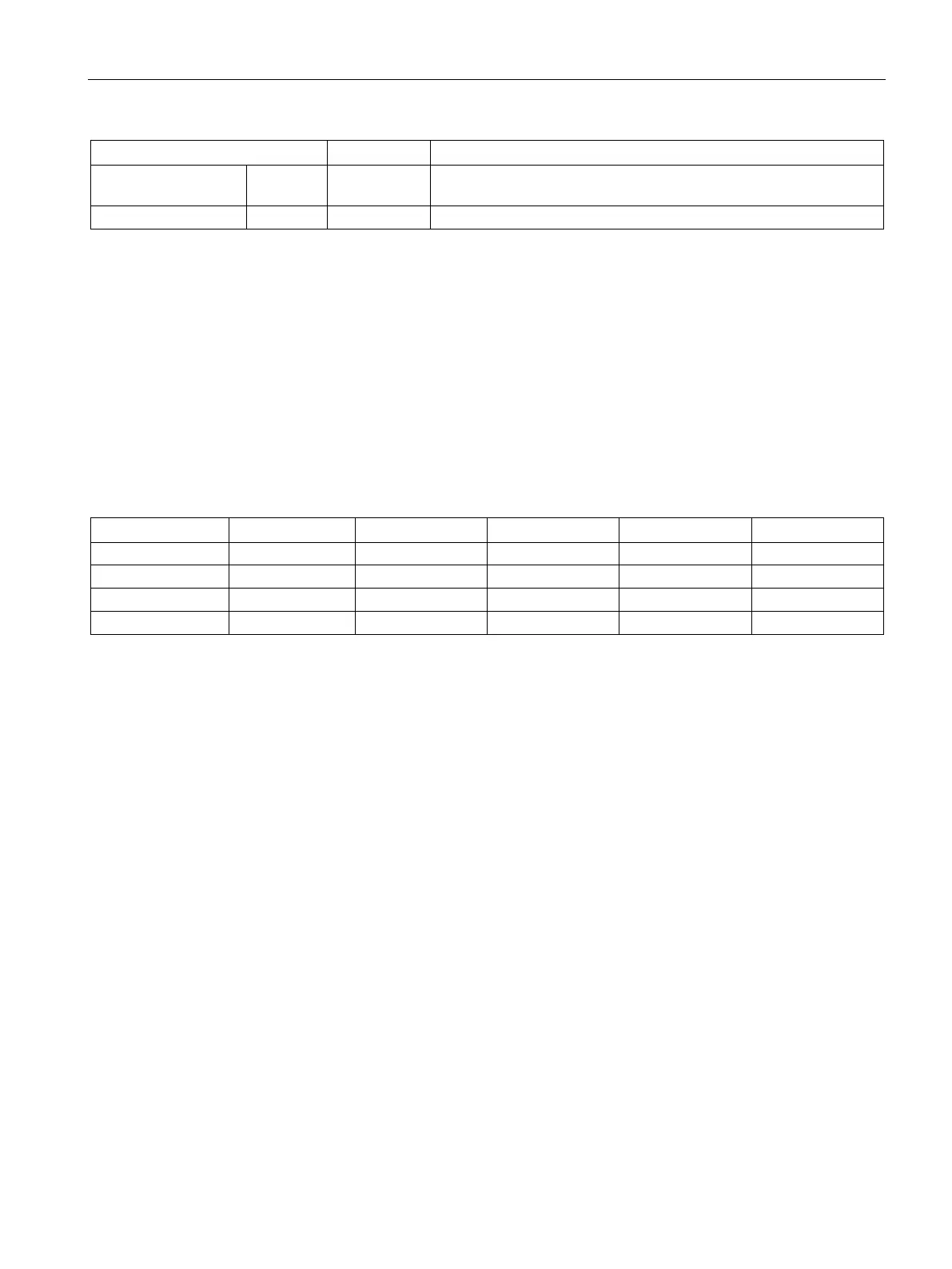Communication processor and Modbus TCP
13.3 Point-to-point (PtP) communication
S7-1200 Programmable controller
System Manual, V4.2, 09/2016, A5E02486680-AK
1117
STRSEQ4CTL IN Byte Sequence 4 ignore/compare control for each character. Default val-
STRSEQ4 IN Char[5] Sequence 4 start characters (5 characters), Default value: 0
Consider the following received hexadecimal coded message: "
10 aa
bb 10 aa 16"
and the configured start sequences shown in the table below. Start sequences begin to be
evaluated when the first 68H character is successfully received. Upon successfully receiving
the fourth character (the second 68H), then start condition 1 is satisfied. Once the start
conditions are satisfied, the evaluation of the end conditions begins.
The start sequence processing can be terminated due to various parity, framing, or inter-
character timing errors. These errors result in no received message, because the start
condition was not satisfied.
Table 13- 16 Start conditions
2 10H aaH xx xx xx
End conditions for the Receive_P2P instruction
The end of a message is determined by the specification of end conditions. The end of a
message is determined by the first occurrence of one or more configured end conditions.
The section "Message end conditions" in the topic "Configuring receive parameters
(Page 1097)" describes the end conditions that you can configure in the Receive_Config
instruction.
You can configure the end conditions in either the properties of the communication interface
in the device configuration, or from the Receive_Config instruction. Whenever the CPU
transitions from STOP to RUN, the receive parameters (both start and end conditions) return
to the device configuration settings. If the STEP 7 user program executes Receive_Config,
then the settings are changed to the Receive_Config conditions.

